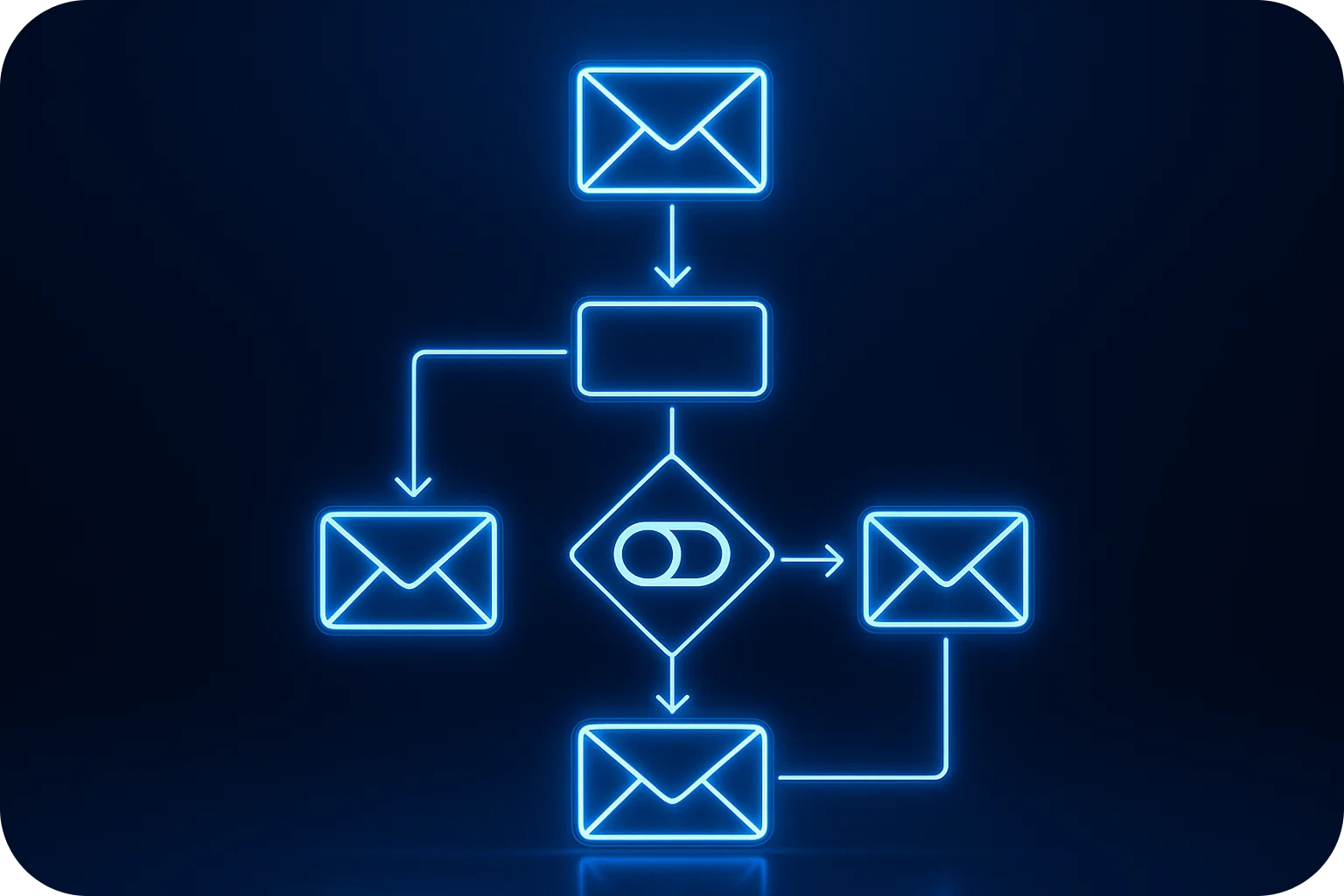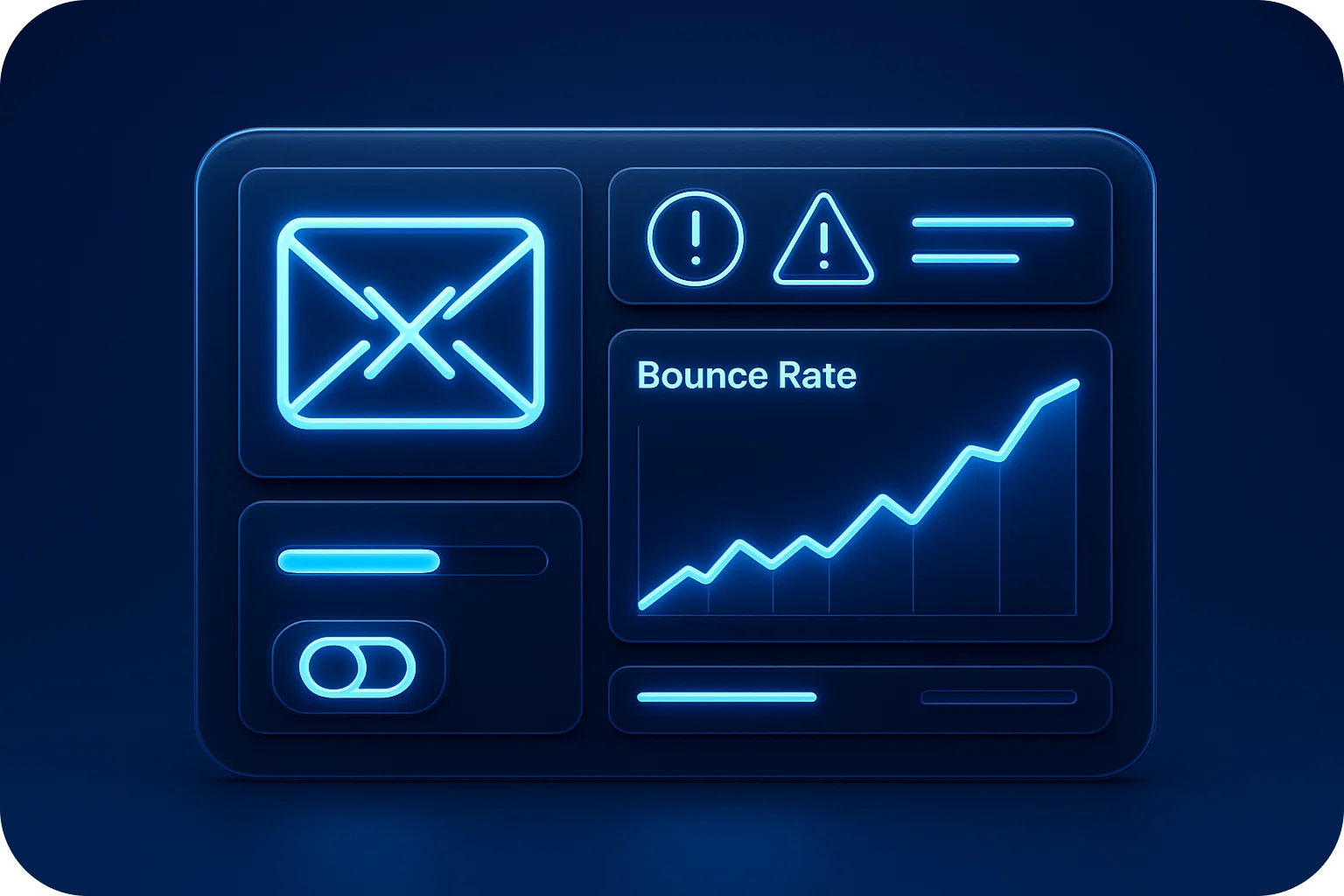The Email Reputation Transfer: What Happens When You Switch Domains Mid-Campaign

Switching domains mid-campaign is one of the most misunderstood aspects of cold email outreach. Many senders assume their hard-earned reputation follows them to a new domain, while others panic that they're starting from absolute zero. The truth lies somewhere in between, and understanding exactly what transfers (and what doesn't) can mean the difference between maintaining your 98% deliverability and watching your emails vanish into spam folders.
What Actually Transfers When You Switch Domains
Let's address the elephant in the room: domain reputation does not transfer. When you register a new domain, email service providers (ESPs) like Gmail and Outlook treat it as a completely separate entity with no sending history.
However, several critical elements do carry over or influence your new domain's performance:
Your IP Reputation remains constant if you're using the same sending infrastructure. This is particularly important for dedicated IP users who maintain consistent sending patterns across multiple domains.
Your Email Content Patterns continue to signal to ESPs whether you're a legitimate sender. If you've been sending valuable, engaging content that recipients open and respond to, those behavioral patterns will help your new domain establish credibility faster.
Your Recipient Engagement History matters significantly. ESPs track how recipients interact with emails from your organization across different domains. If your previous campaigns generated positive engagement, your new domain benefits indirectly through recipient behavior patterns.
Your Infrastructure Setup including proper SPF, DKIM, and DMARC authentication, carries forward. These technical foundations don't build reputation themselves, but they're prerequisites for any domain to be taken seriously.
The Cold Reality of Domain Switching
When you switch domains mid-campaign, you're essentially pressing a partial reset button on your sender reputation. Here's what happens in practice:
Your new domain enters what's known as the "unknown sender" phase. ESPs have no historical data about this domain's sending patterns, volume, or legitimacy. This means even if your previous domain had a stellar reputation, your new domain must prove itself independently.
The warm-up period cannot be skipped. Even experienced senders with multiple successful domains must warm up each new domain gradually. Attempting to immediately send at your previous volume is the fastest way to trigger spam filters and damage your new domain before it's established.
Your sending volume must be rebuilt progressively. If you were sending 100 emails per day per inbox on your established domain, your new domain needs to start at 20-30 emails per day and increase gradually over 3-4 weeks.
What Doesn't Transfer (And Why It Matters)
Understanding what you lose in a domain switch helps you plan appropriately:
Domain Age and History: ESPs consider domain age as a trust signal. A brand-new domain lacks the historical legitimacy that an aged domain possesses, regardless of your previous success.
Domain-Specific Engagement Metrics: Open rates, reply rates, and spam complaint ratios tied to your old domain don't transfer. Your new domain starts with a blank slate in these critical areas.
Recipient Whitelist Status: If recipients or organizations had whitelisted your previous domain, those allowlist entries don't automatically apply to your new domain.
Blacklist Recovery Progress: Conversely, if your old domain had blacklist issues that you'd been resolving, you do get a fresh start—though you must avoid repeating the mistakes that caused the original problems.
Strategic Approaches to Domain Migration
The most sophisticated cold email operations don't switch domains; they implement a multi-domain strategy from the beginning. Here's how to approach domain transitions strategically:
The Parallel Warm-Up Method
Rather than switching abruptly, begin warming up your new domain while your existing domain continues operating at full capacity. This approach maintains your outreach volume while preparing your new infrastructure.
Start your new domain warm-up 4-6 weeks before you need it at full capacity. This timeline allows proper reputation building without rushing the process and risking deliverability issues.
Gradually shift campaign volume from old to new domains over 2-3 weeks once the new domain is properly warmed. This phased transition prevents sudden volume drops on your old domain (which can trigger ESP scrutiny) while allowing your new domain to scale safely.
The Rotation Strategy
Instead of replacing domains, implement a rotation system where multiple domains share campaign volume. This multi-domain strategy distributes sending across infrastructure, reducing the risk that any single domain issue affects your entire operation.
Maintain 3-5 domains per major campaign, with each domain handling 20-30% of total volume. This approach provides redundancy and allows you to rest domains periodically without impacting overall outreach capacity.
Rotate domains on a schedule that prevents pattern detection while maintaining consistent engagement. ESPs increasingly recognize and penalize obvious rotation patterns, so variation in your rotation schedule is essential.
The Segmentation Approach
Use domain switches as opportunities to segment your outreach more effectively. Assign different domains to different audience segments, use cases, or campaign types.
This segmentation strategy allows you to build domain reputation within specific niches, improving relevance signals to ESPs. A domain consistently sending to tech companies about software solutions builds a more targeted reputation than one sending to varied industries about different topics.
Technical Considerations During Domain Transitions
Proper technical setup is non-negotiable when switching domains. Even minor configuration errors can devastate deliverability on a new domain.
DNS Configuration must be flawless from day one. Implement SPF, DKIM, and DMARC records immediately upon domain registration. ESPs check these authentication protocols on every email, and missing or misconfigured records are immediate red flags.
Subdomain Strategy deserves careful consideration. Some senders use subdomains (mail.yourdomain.com) to protect their root domain reputation. However, ESPs increasingly treat subdomains as extensions of the root domain, so this strategy provides less isolation than it once did.
Reverse DNS Setup ensures your sending IP resolves to a hostname matching your domain. This technical detail signals legitimacy and professionalism to receiving mail servers.
Email Account Configuration should mirror your successful previous setup. If specific sending patterns, email client configurations, or SMTP settings worked well on your old domain, replicate them exactly on your new domain.
Maintaining Deliverability During the Transition
The transition period is your highest-risk phase for deliverability issues. Protect your sender reputation with these practices:
Monitor metrics obsessively during the first 30 days on a new domain. Track bounce rates, spam complaint rates, and engagement metrics daily. Any unusual patterns require immediate investigation and adjustment.
Reduce volume at the first sign of trouble. If your new domain shows declining inbox placement or increasing bounce rates, immediately scale back sending volume and extend your warm-up period.
Maintain content quality throughout the transition. The temptation to increase volume or become more aggressive with messaging during a domain switch can be strong, but this is precisely when you need to be most conservative with content quality.
Segment your highest-engaged recipients and send to them first on your new domain. These recipients are most likely to open, read, and respond—generating the positive engagement signals your new domain needs to build a reputation quickly.
The Long-Term Multi-Domain Approach
The most successful cold email operations don't view domain switching as an occasional necessity; they build multi-domain infrastructure as a core strategy.
Maintain a portfolio of domains at various stages of maturity. This approach ensures you always have warm, reputable domains ready for campaigns while newer domains are warming up in the background.
Plan domain rotation 6-12 months in advance, registering and beginning gentle warm-up on domains well before you need them at full capacity. This forward-thinking approach eliminates the pressure to rush domain warm-up and reduces the risk of deliverability issues.
Document what works across your domain portfolio. Track which warm-up schedules, sending patterns, and content approaches generate the best reputation building on new domains. This institutional knowledge becomes increasingly valuable as you scale your multi-domain strategy.
Conclusion
Switching domains mid-campaign doesn't have to be a deliverability disaster, but it requires understanding exactly what transfers and what doesn't. Your domain reputation stays behind, but your infrastructure, content quality, and strategic approach carry forward.
The key is planning. Whether you're implementing a multi-domain strategy from the start or need to transition to a new domain, giving yourself adequate time for proper warm-up and gradual volume scaling protects your sender reputation and maintains the deliverability rates your campaigns depend on.
Remember: in cold email outreach, patience during domain transitions pays dividends in long-term deliverability and campaign performance.
More articles
Get started now




%201.png)





